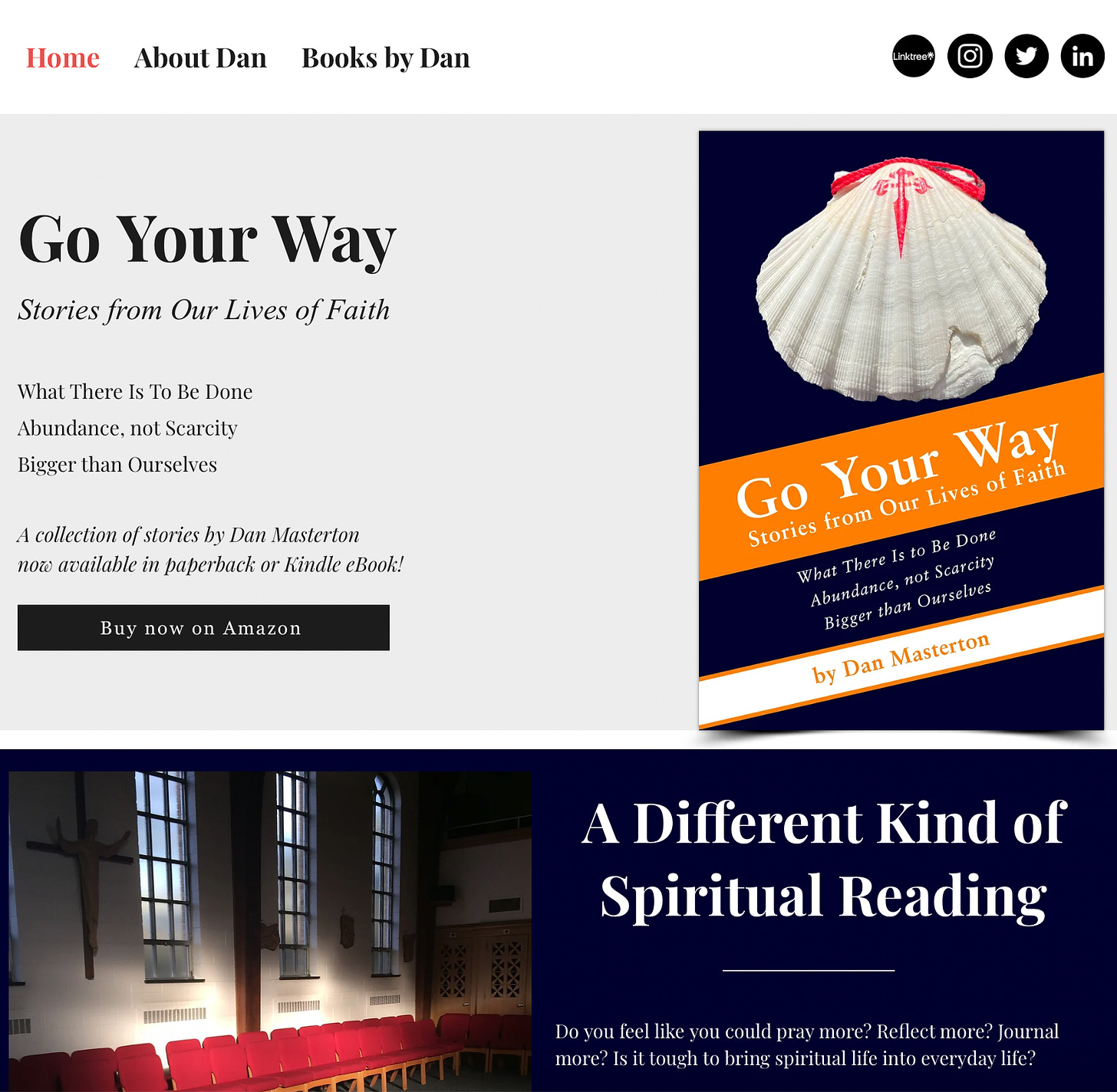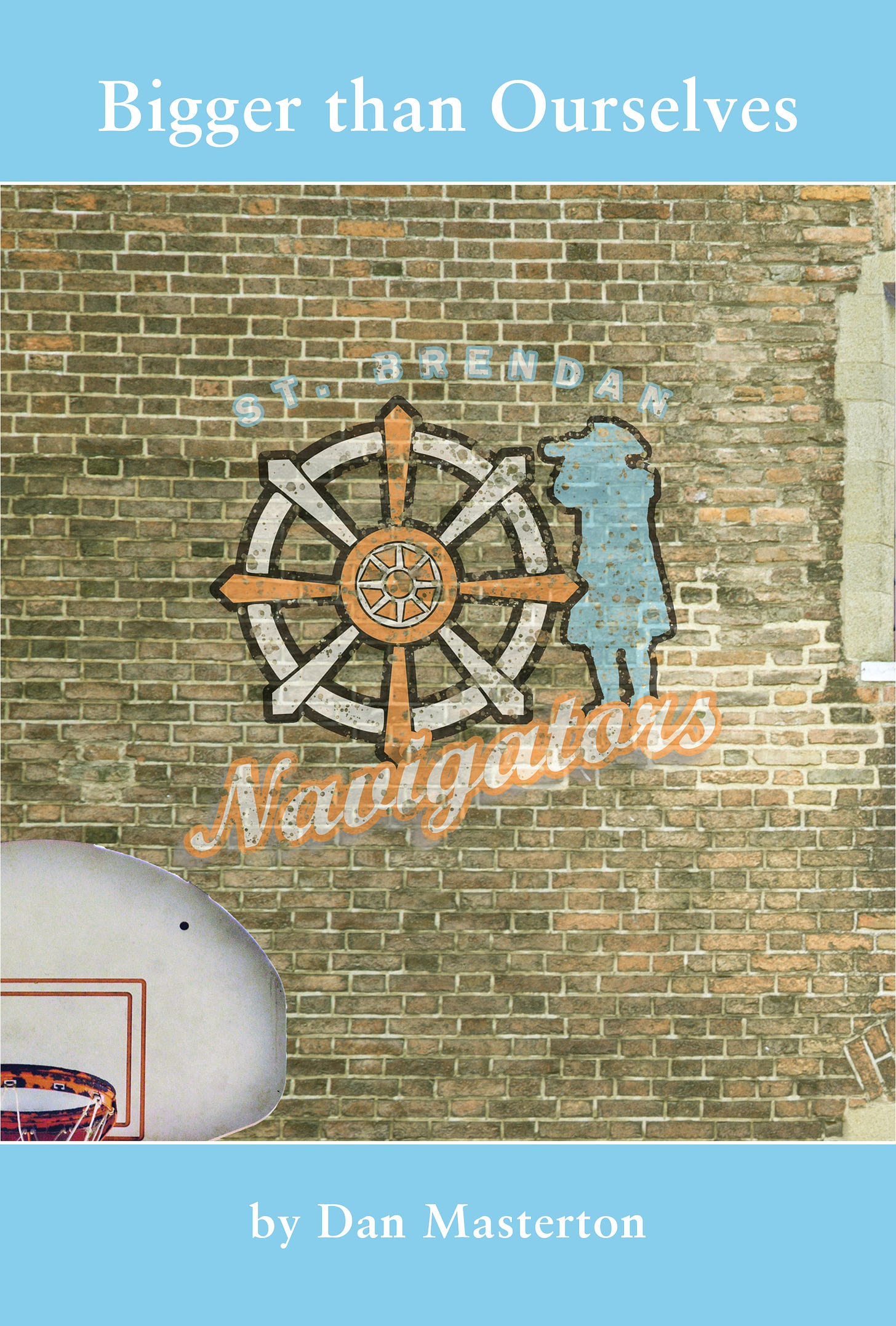by Dan Masterton
So here we are, at the final chapter of what is (for now at least) my final fiction story. It’s been fun to work through the process and share it, and I’ve definitely learned a few things worth sharing.
The final chapter is a bit of an epilogue, so I let the last bit of the story stand on its audiobook-own. Here’s the reflections from writing these three stories and trying to get them out there a bit:
First, if you’ve ever wondered about creative writing or fiction writing, give NaNoWriMo a shot.
NaNoWriMo is shorthand for National Novel Writing Month. The idea is that someone takes the month of November and attempts to write 50,000 words to tell a story during the 30 days. The specifics can vary from writer to writer, but the purpose is to set a tidy timeframe and a round-numbered quantity and set to it. While the peak of chatter and activity is November (the ideal time if the communal aspect will motivate you), their excellent resources for sketching and structuring a story and for setting yourself up to succeed are pretty evergreen.
In 2020, as we all navigated new waves of mask mandates, closures, and restrictions, and carried such uncertainty and change into the cold and indoor winter months, I decided to take the plunge on this during that November. Spending some September/October moments in brainstorms, outlines, and then intentional resources, I prepped a story and got down to business. I made it through 50,000 words before the end of the month, and spilled over into December with a few more bits. I shelved it for a few months, picked it up back up for review and edits, and decided to semi-publish it.
I took two more swings at writing stories — in 2021 and 2022 — and I ended up with three full-fledged (novice) medium-length works of fiction. It was a lot of fun to set a goal and work to meet it. I personally found the dash of specificity coupled with wide creative latitude was perfect to engage my creative side and send me in the right direction.
With the exception of a rare assignment along the way in high school, college, and grad school, I can’t remember doing much significant creative writing during school. It was fun to bring all these years of education, reading, and writing into a different mode and try to do something meaningful in a new way. You should give it a shot, too!
The darnedest thing about writing is that people will never read anything you write if they don’t know that you wrote it. If I could will it, I would love to get everything I write in front of a perfect target audience without my ever having directly personally suggested it to any members of that audience. Unfortunately, it takes the writer doing that on their own behalf or laboriously building an audience of people to be that extension; even with an agent or publisher, an author still needs to be committed to doing this big in order to supercharge the reach. I don’t have the stomach for it.
I enjoy small-stakes moments in which I might allude to something I’ve written or published. But, despite whatever arrogance and self-assuredness I possess, I’ve never liked the idea of doing much more than passive posts on social media. I even discontinued the Facebook Page I had going for many years because it just felt too much like an imposition and overkill, especially when I would re-share those posts to my own profile.
When I got these stories together into a larger book, I took one last good try at this process. I picked out some folks who do great work spotlighting things akin to what I do, and I connected with them over sharing these stories. My hope was that my casting a narrow, intentional net, that I could connect with the right audience, seek those connections in an authentic way, and then share myself and my work in a way that felt comfortable.
I was able to join one podcast, one article Q&A, and one web video series, and I am grateful to Jim, Robert, and Amy for their great work and their partnership in spreading the word in this way. Ultimately, these opportunities did not convert to massive book sales, but I am glad to have had the opportunity and appreciate getting those thoughts out to people who may have listened, read, or watched. If more opportunities come up to do interviews, panels, talks, or articles, I’d enjoy the chance, but my heart isn’t in the pavement-pounding or self-marketing that goes into increasing those opportunities.
Ultimately, it reinforced to me that I’ve always welcomed and embraced the things that come more organically, through my jobs, my friendships, and my professional network of ministry folks, and it also confirmed that I am ineffective, uncomfortable, and uninterested in trying to promote myself. I think there’s a line of questioning that helps me understand this not as self-promotion but more broadly or inclusively as evangelization or ministry or informing people. I struggle to get there.
I’d say it’s part aversion and part inability. And I can live with that. I am comfortable marketing myself for jobs and to get a placement in ministry, and I welcome what comes downstream of that. I know my call is to ministry, through pastoral interactions, through writing, and more, unfolding as it may, without pressing.
Finally, you have to be excited about making something artful, creative, and beautiful for its own sake.
Given the overlapping themes of young adults exploring their lives of faith in the Church, in discernment, and in relationship, I put these three stories together into one book. It was fun to title it (Go Your Way!), make some cover art (my Camino pilgrim’s shell!), and build the little compilation (a nifty navy paperback).

Even after all that work on the back end plus doing the things I described above to put it out there plus a few bucks in paid advertising, I think I sold about 25 copies of the first story standing on its own and then about 10 copies of the compilation. Eventually, I just lowered the Amazon price to a $0 royalty, and it’s basically listed for cost-of-goods and prints on demand per order. I like this better. I find I actually bring it up more often to others when the financial piece is zeroed out!
This is all to say that, while I would welcome an increased audience if it came, I’ve founded wider, deeper, fuller peace in simply writing — and in the editing, the design, and the process and synthesis — for its own sake. I write because my brain and heart seize upon questions and ideas and hash them out naturally, before I even need to be intentional about it. I write because I want to organize the reflections and synthesize them into something sharper. I write and share because I want to offer my process and result to others and find whether or not it has resonated with them (and this is the little place that drives me to still do this bit of self-promotion I do).
My friend Josh has an even more mature, polished handle on this complex. Put simply, he suggests, “There are precious few external rewards to this craft — writing is an exceptionally inefficient way to gain attention.” He suggests that if you can do an anything else that you just do that. And he’s not wrong.
And I think that’s part of why I can only be a writer as a component and complement to ministry. I can only write when I live out an incarnate faith in my life, in my relationships, in my marriage and family, and in my Church communities, and when I’m striving to be a John-the-Baptist in ministering Christ and the Gospel and our social teaching to others in accompaniment and formation. Doing that ministry and living my life fuel the writing and make it a major-but-not-sole part of who I am and what I do.
Yet, I want to write. I need to write. I want to share. I need to hear what people are reading and what they think of what they’re reading. And all of this happens best when I separate myself from seeking mass appeal or quantified audience or analytical engagement. I’ll never be able to totally avoid the insights data or ignore the quantity of engagement, but I’ll always be delighted to read a comment, hear someone’s response to my offering, or get the chance to have a longer discussion — because I wrote and shared.




